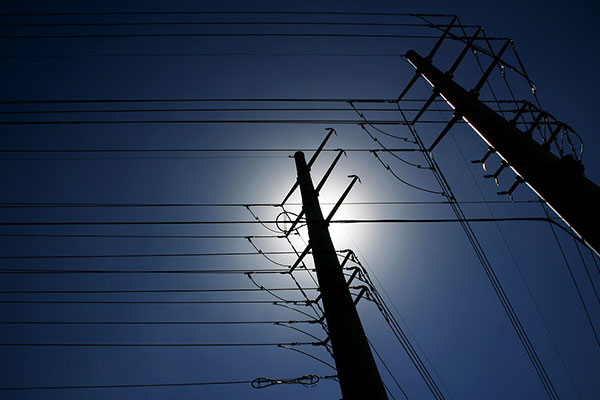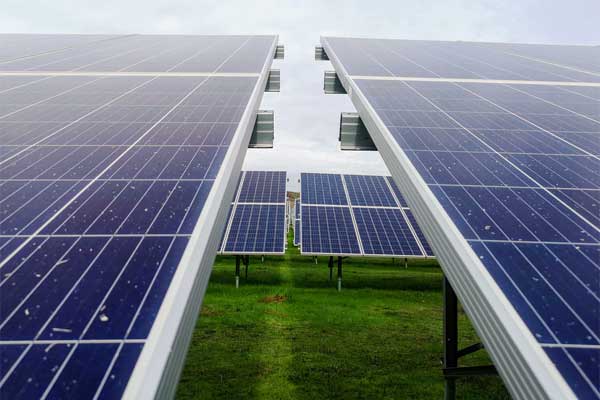- Two new studies led by North Carolina State University offers a preview of what electricity consumers on the West Coast could experience under two different future scenarios.
- One where excessive heat due to climate change strains power supplies, and one where the grid shifts toward renewable energy while the climate follows historic trends.
- In both cases, they found power costs and reliability remain vulnerable to extreme weather. They also found a greater risk of power blackouts in summer and early fall.
Two new studies led by a North Carolina State University researcher offer a preview of what electricity consumers on the West Coast could experience under two different future scenarios: one where excessive heat due to climate change strains power supplies, and one where the grid shifts toward renewable energy while the climate follows historic trends.
In both cases, they found power costs and reliability remain vulnerable to extreme weather.
“The impacts of climate change and extreme weather events on the grid, mostly in the form of drought and heat waves, are going to get worse under climate change,” said Jordan Kern, assistant professor of forestry and environment resources at NC State. “Even as the West Coast grid moves away from fossil fuels toward wind and solar, these extreme weather events will still impact system reliability and the price of power.”
Published in the journal Earth’s Future, the two studies project future power supply and demand under separate scenarios. In the first study, researchers used computer models to simulate the impacts of climate change on the current power grid in California and the Pacific Northwest. They evaluated the grid’s price and reliability under 11 different climate scenarios between 2030 and 2060, drawing on multiple scientific models for how the climate would change under a “worst-case scenario” of fossil fuel emissions, and another less severe scenario.
“The worst-case scenario is worth looking at even if there’s some evidence that the world is going to reduce fossil fuel emissions enough to avoid it,” Kern said.
The researchers found greater risk of power blackouts in summer and early fall, largely driven by extreme heat in California that causes high demand for power as people cool their homes. They projected there would be shortfall events in all but one scenario where climate change affected power generation in both regions simultaneously.
However, they noted these power shortfalls would remain relatively rare. The maximum under the worst case was 72 hours of West Coast-wide power supply shortages across 31 years.
“As it gets hotter and hotter and hotter, and demand for electricity gets higher, we expect the grid to fail,” Kern said. “Those extreme heat events are going to become much more severe.”
Extreme heat in California would also affect the price and supply of power in the Pacific Northwest. Historically, the regions have shared power.
“If, and that’s a big ‘if,’ historic exchanges of electricity continue, and California has a high demand for electricity because of heat, it could cause the Pacific Northwest to run out of electricity, as they won’t be able to meet their own demand,” Kern said.
They also found climate change could impact the Pacific Northwest directly by limiting supplies of hydropower, which is electricity powered by water. Snow serves as stored power, so reductions in snow or changes in the timing of snowmelt reduce power available in summer.
The biggest effects of climate change on the Pacific Northwest would also be in the late summer or early fall, when the grid is already stressed. Even small decreases in streamflow in September caused by climate change, along with increases in summer demand for power, would be enough to cause more shortfall events in the Pacific Northwest. However, they also projected West Coast-wide shortfall events due to climate impacts on the Pacific Northwest alone to be rare.
In addition to issues of reliability, the researchers also found climate change would increase the price of power. Under the worst case where climate change impacts power supply and demand in both California and in the Pacific Northwest, they expected more hours in which the wholesale price of electricity reaches the cap of $1,000 megawatts per hour in California, especially in late summer. Climate change in California would also have significant impact on prices in the Pacific Northwest.
“When prices go up to $1,000 per megawatt hour, that’s the grid ringing the alarm bell,” Kern said. “They’re making electricity so expensive partly in order to incentivize people to consume less.”
In a second study, researchers evaluated the price of power through 2050 with more renewable energy sources added to the grid, while assuming natural gas power plants would still be in place as back-up. They compared five scenarios for each market: two scenarios that varied the mix of solar and wind by cost; one scenario with more batteries added to store power; a scenario in which many people are adopting electric vehicles; and the status quo trend. They assessed the cost of electricity in these different systems under 100 representative years of both normal and extreme weather events that could occur under historic climate conditions — without additional climate warming.
“With the West Coast grid now, we know certain things about how it will perform because it relies so much on hydropower — that a dry year is a bad and a wet year is good,” Kern said. “What we wanted to know is: as you decarbonize the grid out West, adding electric vehicles, batteries, solar and wind, does that shift at all?”
Even with renewables, they found extreme drought and heat would still drive the extremes in price — with “good” years of the lowest prices driven by mild temperatures and high streamflow, and the highest prices driven by extreme heat or drought.
“When you think about the very worst years, those conditions will still be driven by what drives those events today: lack of water or a heat wave in the middle of the summer,” Kern said. “Adding renewable energy does not change the very worst or best year, but it kind of shifts things around in the middle.”
In California, the future scenario with increased wind energy led to the lowest prices, followed by solar. In the Pacific Northwest, the scenarios with the highest amount of both wind and solar had the lowest prices. Supply shortfalls would be most frequent under the pathway with the greatest demand for electric vehicles.
“As the grid uses more wind and solar, the price goes down because it’s less expensive, and it pushes out natural gas,” Kern said. “The exception is that when you have high demand for power from electric vehicles, demand gets so high, it breaks the system. It’s pretty rare in our models, but it happens when there isn’t much water and there’s a heat wave.”
Kern said the reductions that they projected in greenhouse gas emissions under the five scenarios were “conservative;” their models chart up to 50% de-carbonization through 2050, while most West Coast states have set goals to make more substantial shifts sooner.
“Our key finding was that as the grid decarbonizes, you are still going to be left with that vulnerability to water and heat,” Kern said. “This is a system that can’t run away from that.”
The study, “The Effects of Climate Change on Interregional Electricity Market Dynamics on the U.S. West Coast,” was published online in Earth’s Future on Dec. 7, 2021. In addition to Kern, the other authors were Joy Hill, David E. Rupp, Nathalie Voisin and Gregory Characklis. The study was supported by the National Science Foundation INFEWS program under awards 1639268 T2 and 170082 T1.
The second study, “Technology pathways could help drive the U.S. West Coast grid’s exposure to hydrometerological uncertainty,” was published online in Earth’s Future on Dec. 28, 2022. In addition to Kern, the other authors include Jacob Wessel, Nathalie Voisin, Konstantinos Oikonomou and Jannik Haas. The study was funded by the U.S. Department of Energy Office of Science as part of research in the MultiSector Dynamics, Earth and Environmental System Modeling Program as well as the National Science Foundation INFEWS program award 1639268.
—
Publication Referenced in the Article:
Joy Hill, Jordan Kern, David E. Rupp, Nathalie Voisin, Gregory Characklis. The Effects of Climate Change on Interregional Electricity Market Dynamics on the U.S. West Coast. Earth’s Future, 2021; 9 (12) DOI: 10.1029/2021EF002400
Jacob Wessel, Jordan D. Kern, Nathalie Voisin, Konstantinos Oikonomou, Jannik Haas. Technology Pathways Could Help Drive the U.S. West Coast Grid’s Exposure to Hydrometeorological Uncertainty. Earth’s Future, 2022; 10 (1) DOI: 10.1029/2021EF002187
—
This article was written by the team at North Carolina State University.











Comments